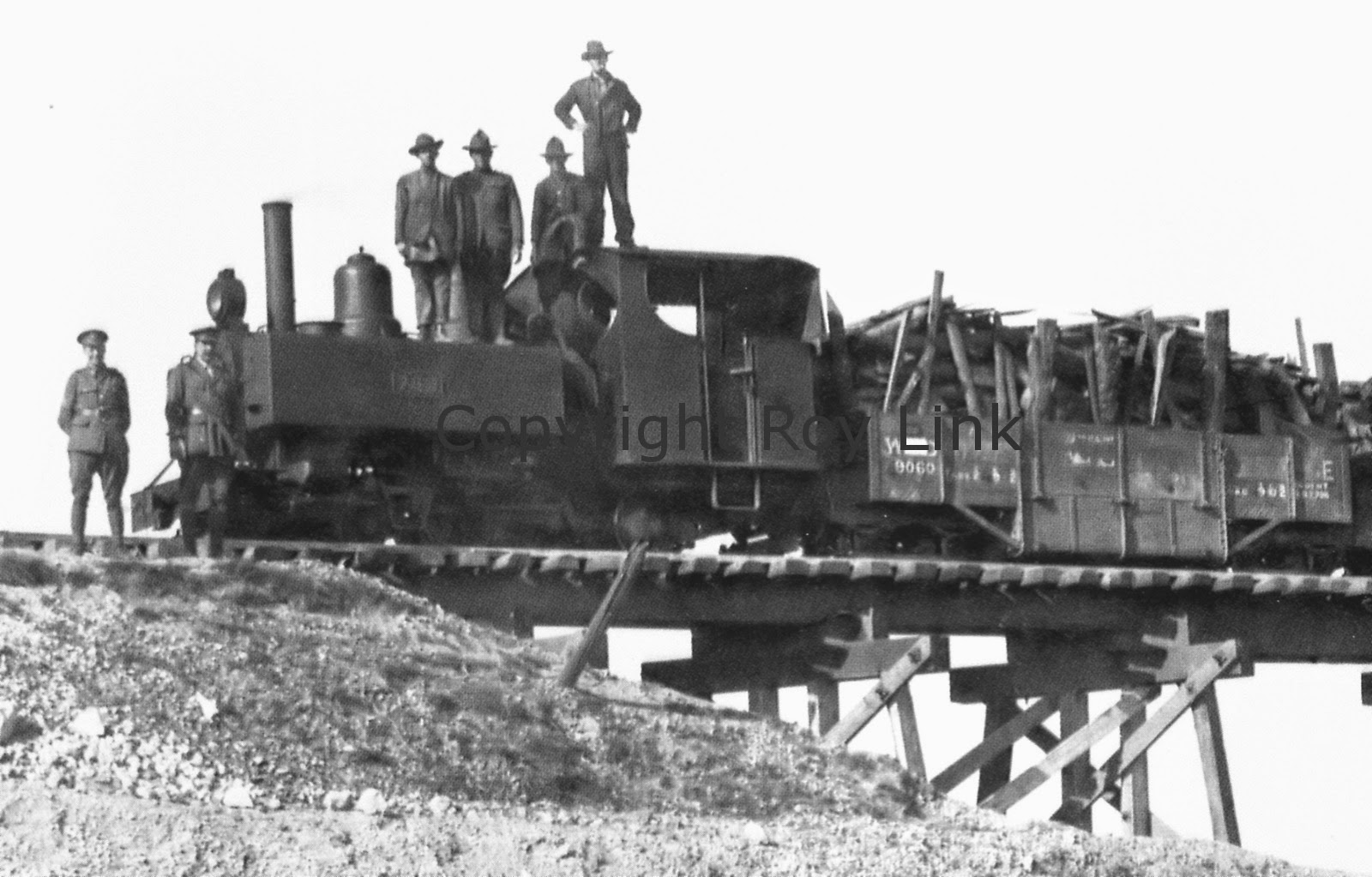The WDLR Album, compiled by Roy Link, appeared a few months ago. Starting with a useful introduction, it provides a snapshot of British narrow gauge military railways in early 1918. Focussing on a remarkable album of pictures photographed on March 17th 1918, it provides stunning reproductions and background information on the War Department Light Railways. The photos are reproduced to full-page size. Sceptics might dismiss a sketch or a small photo as 'easily forged'. Here, in large photos which could hardly be faked, there is little doubt that they are faithful views of what actually happened. Here is proof that there really were networks of 60cm railways running between the Western Front and standard gauge stations, staffed by British, ANZAC, Canadian, Indian and Chinese troops. As the Introduction explains, the Album was saved from a rubbish skip by Colonel David Ronald and Major 'Nic' Carter.
 |
| WD Baldwin 4-6-0T, laden E-class wagon and friends pose on a timber trestle bridge (detail of photo on page 36 of Album) Courtesy Roy Link |
 |
| Pont du Lyn |
 |
| A Dick Kerr diesel pulls a class F and class E wagon (March 17th 1918) Courtesy Roy Link |
 |
| Built in the 1890s and pictured in 2004 this standard Péchot wagon was the inspiration for the WD wagons shown above |
For any reader tantalised by Roy's reference to a Péchot Bourdon locomotive, here is some relief. Between pages 92 and 97, there is a fascinating sequence showing an F Class wagon being loaded with a 6" howitzer. Part of a Péchot Bourdon locomotive can be glimpsed at the extreme left of one of the pictures. Here is a complete Péchot Bourdon.
Why does the title of this blog post mention giant killing? As well as the contemporary album, it includes the archive of the late John Kimber, particularly enlightening in the section on rolling stock. John, like Colonel Ronald, rescued many a precious collection from the bonfire and saved them from posterity.The giant, Death, may have come for John, as it came for all those forgotten railway heroes, but their influence lives on in Roy's book.
In his introduction to the album, Colonel Ronald hints at another sinister giant, that of ignorance. The records, from which the book has been compiled, survived on the goodwill (and sense of history) of employees at various levels within the War Office. The original photo album, he wrote in his Introduction, 'was orphaned by many years of well-intentioned salvage drives, clear-outs and the like. .... The WDLR was not well served'
We all welcome this long overdue tribute to the WDLR system and its workers.

No comments:
Post a Comment